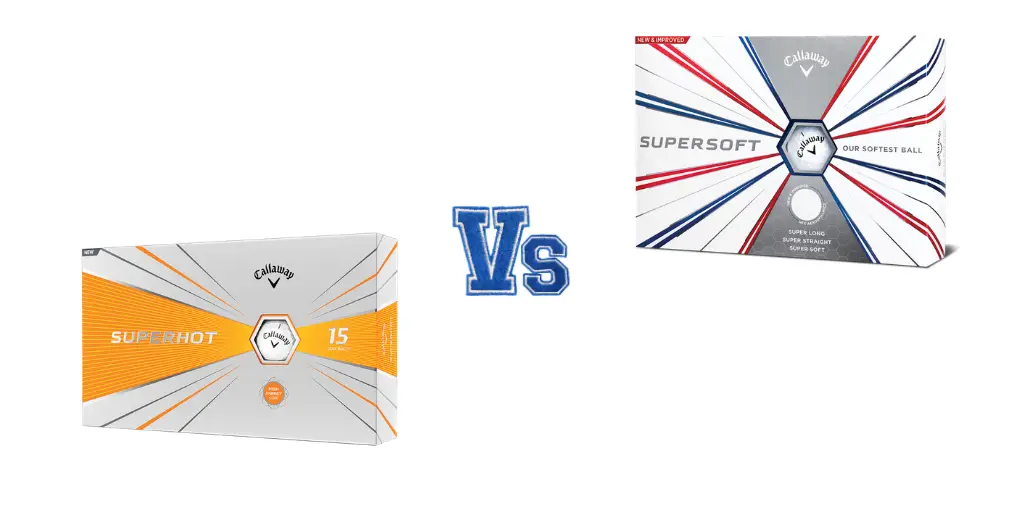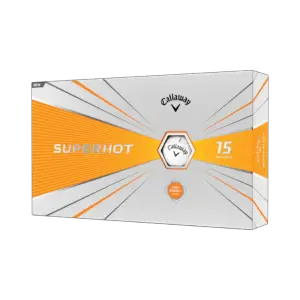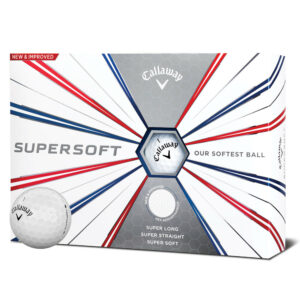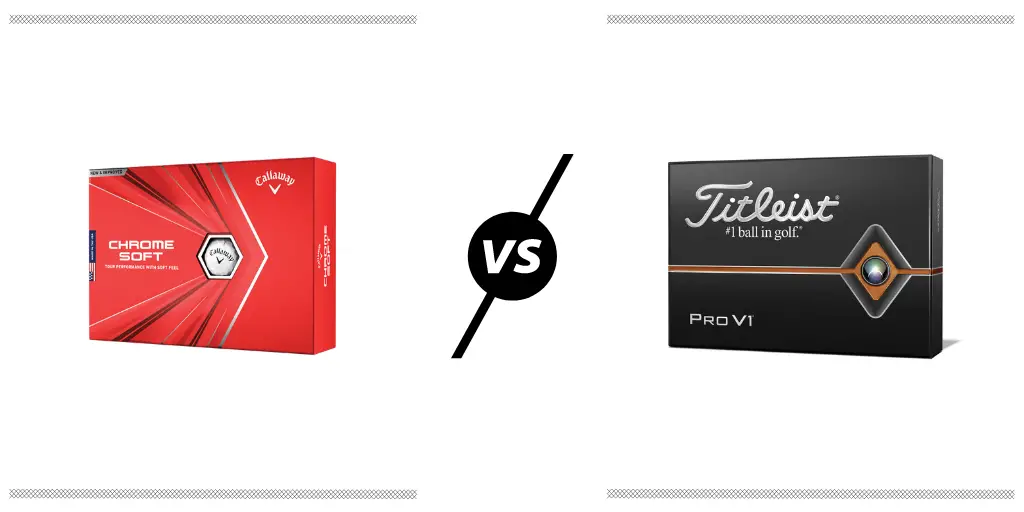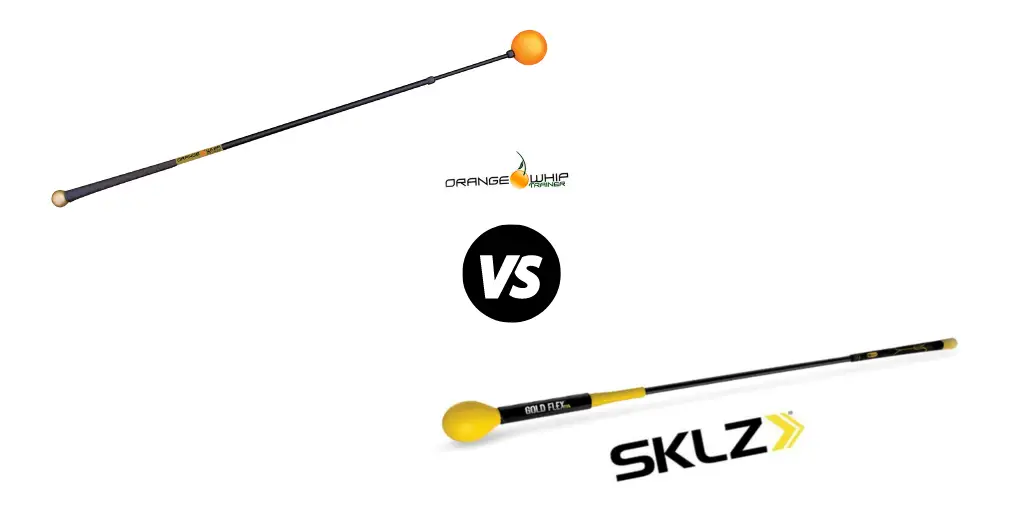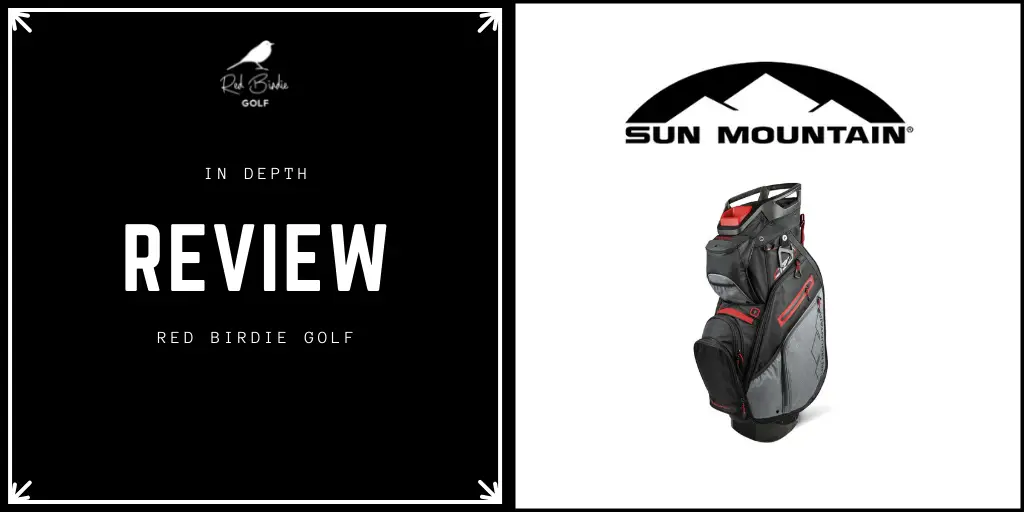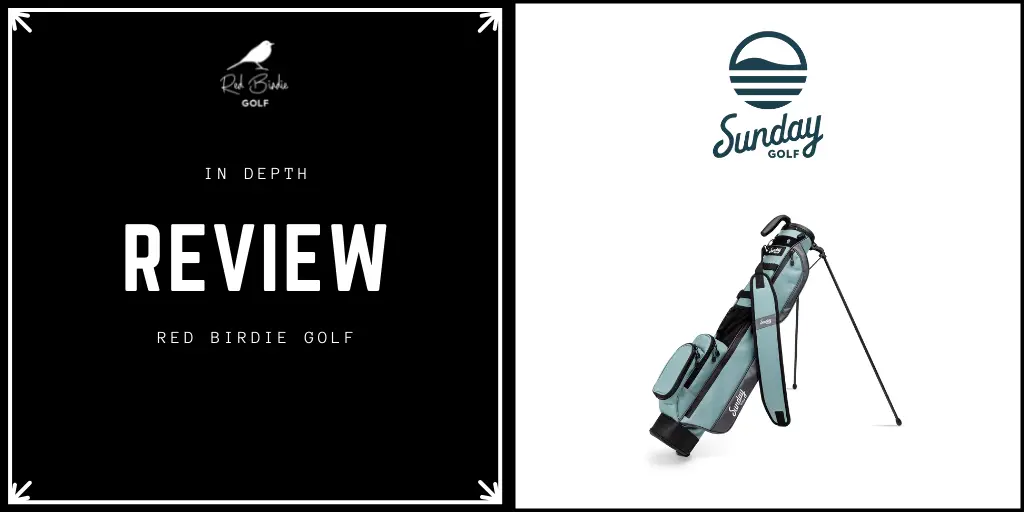After Titleist, Callaway has become the second largest producer and seller of golf balls in America. From their high end Chrome Soft to their lower end Warbird and everything in between, Callaway produces a top notch golf ball lineup.
2 of their mid range golf balls that are high quality and great value are the Callaway Superhot and the Callaway Supersoft.
We will compare the Callaway Superhot vs Supersoft for the rest of this article and help you decipher the differences between them. While you cannot go wrong with either, there is one that probably fits your game a little better.
Superhot
The Callaway Superhot is a 3-piece golf ball with a medium compression core and a surlyn cover that is slightly harder than the urethane cover you find on a lot of balls in this category.
The Superhot, as the same suggests, is built to be hot off the club face and long no matter what club you are swinging. It has an aerodynamic design built for low drag and a penetrating ball flight that stays up in the air as long as possible.
The 3-layer construction gives the flexibility to produce good spin around the green and the soft cover adds some feel from everywhere on the course.
At a compression rate of 50, it is not the ultra low compression rating that takes away spin completely, but it is still easy to hit this ball pretty straight.
While it does not have the spin of the Chrome Soft or Pro V1, you can check the ball up around the green and get your approach shots to stop on a dime.
The main thing about this ball, however, is the distance. This ball is really long while maintaining some of the other features mentioned above.
Pros
- One of Callaway’s longest golf balls.
- The Callaway name means a lot, and the technology that went into the production of this ball allows it to be long and soft with a good spin rate.
- You get extra distance from every club from your driver to your wedges.
- A really good feeling ball, it is not so soft that you cannot feel it, but it is not so hard that it feels like hitting a rock.
Cons
- A kind of “tweener” ball in terms of both price and features. Many players will either opt to pay less for a soft distance ball or more for a players ball.
- They are not very good for working the ball around the course.
Supersoft
The Callaway Supersoft is maybe the most well-known golf ball amongst beginners. You get the Callaway name and quality with the game improvement features that beginners are looking for. The combination of distance and softness make this ball one of the more popular options in the Callaway arsenal.
With a compression rating of 38, the ball jumps off of the club face and produces very little spin. If you have a hook or a slice, this is a great ball to take away some of the spin that causes those mishits.
The ball is available with either a surlyn or urethane cover and the enhanced softness of the urethane is ideal for the majority of golfers playing Supersoft balls.
The Magna version of the supersoft is an oversized golf ball that is even easier to hit and easy to get up in the air. The low compression core gives you great distance, the HEX aerodynamics reduces drag and gives you a penetrating ball flight, and the softness of the cover gives you good feel around the green and everywhere else for that matter.
While you lose out on the spin to both work the ball around the course and stop the ball on a dime, you gain pretty much every feature that a beginning golfer or golfers with a slower swing speed will need.
Pros
- One of the premier “long and soft” golf balls on the market.
- The low compression rate, 38, makes the ball jump off the club for explosive distance.
- These balls produce very little spin which give you more accuracy and increased distance not to mention it will help with the dreaded slice.
Cons
- Not a good ball if you have a fast swing speed, really anything over 90mph may be too fast for these balls.
- Very low spin rates make golf around the greens
Features Face to Face: Callaway Superhot vs Supersoft
Construction
The Supersoft and Superhot golf balls are pretty similarly constructed. The main difference is the higher compression rating of the Supersoft and the softer outer urethane cover of the Superhot. The Superhot’s construction allows for a little extra spin and a little extra firmness while the Supersoft has better feel around the greens. In general, the construction of the Superhot is a little better all-around, but only if higher spin rates is something that you want in your golf ball.
Performance
Distance
As far as distance goes, you cannot really go wrong with either. The added firmness of the surlyn cover on the Superhot adds some to the distance of that ball, but the Supersoft adds a little more distance. With the HEX aerodynamics and really low compression rating, the Supersoft is as long as any ball on the market.
Launch
Again, you cannot go wrong with the launch of either ball. They both promote a high ball flight and a steep launch angle. The Supersoft is a better golf ball for slower swings, so if you swing hard the ball may actually launch too high and have too much backspin. In general, if you are a hard swinger (95mph+), you will prefer the launch of the Superhot ball and if you have more moderate swing speeds you will like the Supersoft.
Spin
Long Game
The Supersoft has a very low spin rate. For players who are prone to slice or hook the ball, this is a great thing. The Superhot has a higher spin rate though not what you find on the Chrome Soft or ProV1. It gives you some workability and effectiveness around the green without adding too much spin to your shot.
Short Game
Both balls are great on the putting green. They roll straight and true. The difference is that the Superhot produces a higher spin rate and is, in general, better around the greens.
Feel
Long Game
Feel is more important in the short game, but it plays a role in the long game as well. The Superhot is a little firmer and you can actually feel the firmness at contact. Some players like a firmer golf ball both because of the extra distance and because it feels “substantial” when you strike it. The softer Callaway Supersoft, however, provides the feather soft touch that most golfers want and the feedback, sound, and feeling in your hands that the soft urethane cover produces.
Short Game
The Supersoft is a softer feeling golf ball and that feel is even more important in your short game than your long game. You have better distance control, feedback, and better interaction with the green.
Cost
The Superhot is a more expensive golf ball. It is a better all-around golf ball for most players other than beginners, but it is a more expensive golf ball as well.
The Supersoft is priced perfectly for what it is and is extremely popular partly because of the price point. The Superhot, as mentioned above, has some “tweener” qualities to it. That means it is a little too expensive for many beginners but does not have the same features that a player who is willing to spend more on golf balls would desire.
Standout Features in Callaway Superhot vs Supersoft
Feel
This is probably the biggest difference between the two golf balls. The Supersoft, as the name suggests, has a much softer outer cover and overall feel. Feel is a hard thing to describe, but it is an easy thing to, well…feel. If you were to go out and hit both golf balls from the same places with the same swings, the Supersoft would feel like the better golf ball.
Spin
As much as the Supersoft produces a much softer feel, the Superhot gives you a higher spin rate. It is definitely easier to work around the course, but that would not be the main reason to purchase the Superhot golf ball. The thing that sets the spin of the Superhot apart from the Supersoft is around the green. You get a lot more backspin which in turn gives you more shot flexibility and control over stopping the ball. The Superhot has a great combination of pure distance coupled with backspin around the green.
At the same time, the extra low spin rates of the Supersoft are great off the tee for players who struggle with slicing or hooking the ball. The lack of spin help to ensure a straighter shot and to make some of the extreme hooking and slicing a thing of the past.
Distance
When you buy both of these golf balls, your main concern is probably distance. Both the Callaway Superhot and Supersoft add distance to your game, but with a caveat. The Supersoft is really good for beginners and players with slower swing speeds. The low compression core gets as much out of your drives as humanly possible, but players who swing hard will get too much backspin and too high of a launch. The Superhot is great for all skill levels but not as good for beginners and moderate swing speeds as the Supersoft. The added firmness and slightly higher compression rating can handle bigger swings.
Final Thoughts on Callaway Superhot vs Supersoft
These balls are fairly close in terms of construction, compression, and overall look. The subtle differences and nuances of each ball, however, set them apart.
The Supersoft is a more popular ball for a reason. It resonates with a much broader audience as it gives you the added distance and soft feel that so many beginners, seniors, and anyone else with a more moderate swing speed desire.
The downside, however, is that the ball just does not spin. It is difficult to work around the course and to stop on the green.
The Superhot, on the other hand, gives you the same distance as the Supersoft just with the spin and workability that some of you better golfers are looking for.

